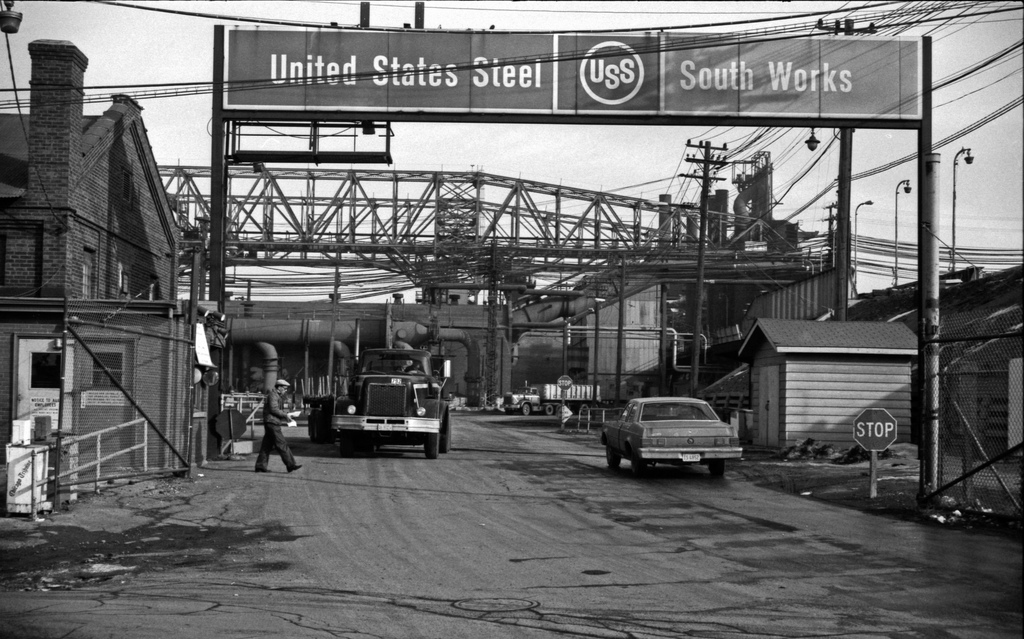U.S. Steel Unveils a New Line with Low Carbon Intensity
Share

A cleaner steelmaking process will produce only a quarter of CO2 that is typically required.
Tomorrow, President Biden will be in Pittsburgh to announce his administration’s push for a big federal infrastructure package – his much-anticipated Build Back Better program that he first began detailing last summer while on the presidential campaign trail.
If what the president is pitching becomes law, it could be a transformative investment in the American economy. Not only would it put a ton of money into the roads, bridges, airports, rails, ports, waterways, and broadband Internet upon and through which American commerce actually travels, but it would also fund the expansion of renewable energy infrastructure. The go-to example for that would be the installation of thousands of electric-vehicle charging stations for the slowly advancing shift away from gas-powered engines in our automobiles.
That’s a big if, of course. It doesn’t take a close observer of American politics to know it won’t be easy to get a multitrillion-dollar infrastructure proposal through Congress.
Nevertheless, the companies that will make the actual material that would go into these infrastructure projects are already preparing their own roles in a greener economy. Which leads us to U.S. Steel, and its recent announcement of a new steel product line it will make at its LEED-certified mill in Arkansas (yes, it’s an honest-to-god LEED-certified steel mill). The company says this product line, which it’s calling verdeX, will produce only a quarter of the carbon emissions previously required in the steelmaking process.
That’s a big deal, as steel is a highly CO2-intensive product, and reducing the greenhouse gas emissions of steel manufacturing will be a huge part in the international effort to address climate change.
Some states are already trying to encourage market behavior by pushing industries to adapt cleaner manufacturing processes to get access to their procurement markets. California did this already in 2017 with its Buy Clean California Act. Similar legislation has recently come up in Washington.
These efforts are important, because if written right they can encourage and reward domestic manufacturers that incur the costs of complying with American emission regulations, which aren’t small. They also discourage the consumption of steel made with a lot of “embodied carbon” – meaning it wasn’t efficiently produced, and the amount of emissions made during production wasn’t considered.
AAM’s Brian Lombardozzi wrote this as an example a while back:
Compare the American regulatory environment with China’s, the United States’ largest trading partner. In 2015, Lawrence Berkeley National Laboratory found that China’s steel industry on average emits 23 percent more carbon dioxide per ton of steel than American or German manufacturers. 2017 data from the Steel Statistical Yearbook by Worldsteel shows China exported 112 million tons of commodity steel (steel that is produced and traded directly, not steel-containing products). That is 1.4 times the total steel production in the United States in that same year. China is also the largest exporter of embodied emissions in steel, accounting for 27 percent of the total export of embodied carbon in worldwide commodity steel trade, and a quarter of the world’s embodied carbon in exported value-added steel products (that’s steel-containing goods).
Though we regulate the domestic steel sector’s production emissions, and the sector has invested heavily to assure production complies with the existing regulatory regime, American buyers of imported Chinese steel (and goods made from it) are essentially importing the embodied carbon. For accounting purposes that negates the reductions made here in the United States and simply shifts emissions to China.
American steelmakers are, on the whole, a lot cleaner than their major competitors. Yet another reason to maintain the Section 232 tariffs on steel imports!
